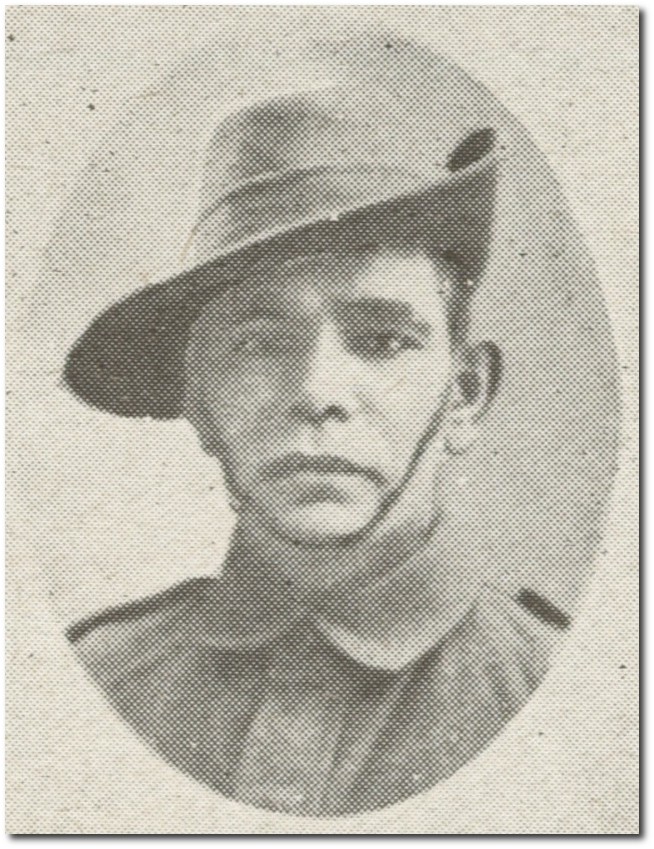
Portrait of Leonard Lynch, published in The Queenslander Pictorial, 15 December 1917
Indigenous Australian, Leonard Lynch, 11th Light Horse Regiment
Leonard Lynch was born in Cloncurry, in 1890 and was a resident of Langlo Crossing, Charleville when he volunteered to join the first AIF in 16 August 1917. When he arrived at Rifle Range Camp at Enoggera, he was assigned to the 20th Reinforcements for the 11th Light Horse Regiment.
Just before he embarked for service overseas, he took the opportunity to marry Violet Campbell, in November 1917. While he was at Enoggera he had his photograph taken at one of the tent studios that operated outside the camp. His image was published in The Queenslander Pictorial just prior to departure with the other recruits.
The 20th Reinforcements, for the 11th Light Horse included many other Indigenous servicemen and later became known as the “Queensland Black Watch”. They embarked on board the troopship Ulysses bound for Egypt in December 1917, arriving at Port Suez early January 1918.
While at sea Lynch was admitted to the ships' hospital with mumps. Soon after his arrival in Egypt he also contracted measles and was admitted to the 2nd Australian Stationary Hospital in Gaza. Lynch soon joined his comrades at the 4th Light Horse Training Camp at Moascar and after several months was set to join his regiment in the field.
Enroute to join them in Palestine, Lynch was taken seriously ill with typhus and returned to Port Said where he was admitted to the 14th Australian General Hospital. Eventually he was fit enough to join his unit in the field in June 1918 where they were stationed at Solomon’s Pools, south of Jerusalem. Lynch remained on active service with the 11th Light Horse Regiment until the end of hostilities and returned to Australian on board HMAT Morvada in August 1919.
Leonard and Violet had a son in 1920 who sadly died in infancy. Leonard was granted exemption from the limitations of the Aboriginals Protection Act, to live and work freely among the community, they resided for many years in Mitchell where he was in the most part employed as a station hand.
Read more ...
- Service record: LYNCH, Leonard
- Embarkation roll: 20th Reinf. 11th Light Horse Regiment
- Queensland Exemption Register 1908 - 1936
- Register of Marriage Applications 1908 - 1936
- Aboriginal Women in Service 1908
- One of the soldiers featured in SLQ’s HistoryPin Collection
Watch ...
- Queensland’s Indigenous Servicemen [digital story & oral history, 12 min, mp4]
The information in this blog post has been researched by State Library staff and volunteers, it is based on available information at this time. If you have more information that you would like to share or further research uncovers new findings, this post will be updated.
Comments
Your email address will not be published.
We welcome relevant, respectful comments.